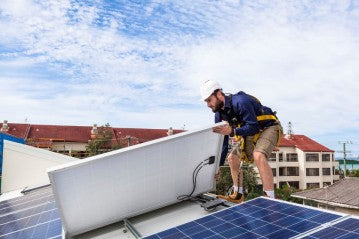
As the world embraces renewable energy sources, solar power systems have emerged as a popular choice for homeowners seeking to reduce their carbon footprint and lower their energy costs. However, before diving into the world of solar energy, it's crucial to understand a few key considerations. In this article, we will discuss seven essential tips to help you make an informed decision when installing a solar power system for your home.
1. Consider how much space you have available
Before installing a solar power system, evaluate the amount of space you have available on your property. Solar panels require adequate sunlight exposure to generate optimal energy output. Ensure that your roof or any other location you plan to install the panels has minimal shading from nearby trees or structures. Additionally, assess the structural integrity of your roof to ensure it can support the weight of the solar panels over their lifespan.
2. Calculate your energy needs
Understanding your energy consumption patterns is crucial when determining the size of the solar power system you require. Analyze your utility bills to gauge your average monthly and annual energy consumption. Consider any future energy needs, such as electric vehicle charging or expanding your home, to ensure your solar power system can accommodate them effectively.
3. Research installing solar power system
Before making any commitments, conduct thorough research on installing a solar power system. Familiarize yourself with the benefits, costs, and potential challenges associated with solar energy. Understand the basic principles of solar power generation, including the components of a solar power system, such as solar panels, inverters, and battery storage (if applicable). Educating yourself will enable you to make informed decisions throughout the installation process.
4. Decide on a type of system
There are different types of solar power systems available, each with its unique features and advantages. Consider the following options:
a) Off-Grid Solar Systems:
These systems operate independently of the utility grid, making them ideal for remote locations or areas with unreliable grid connections. Off-grid systems require battery storage to store excess energy for use during low-sunlight periods.

b) Hybrid Solar Systems:
Hybrid systems combine the benefits of both grid-tied and off-grid systems. They can be connected to the grid but also include battery storage for backup power during grid outages.
c) Grid-Tied Solar Systems:
Grid-tied systems are the most common choice for residential installations. They allow homeowners to generate solar power and feed any excess energy back into the grid, earning credits or reducing their energy bills through net metering.
Consider your specific requirements, budget, and location to determine the most suitable system type for your home.
5. Size the installing solar power system
Properly sizing your solar power system is essential for maximizing energy production and optimizing your return on investment. An undersized system may not generate enough energy to meet your needs, while an oversized system may result in excess energy that goes unused. Consult with a professional solar installer or use online tools to determine the ideal system size based on your energy consumption, available space, and local weather conditions.
6. Calculate how many panels you need
The number of solar panels you require depends on their individual capacity, your energy needs, and the available space. High-efficiency panels produce more electricity per square foot, allowing you to generate more power with fewer panels. Additionally, consider the orientation and tilt of the panels to capture the maximum sunlight throughout the day. A reputable solar installer can assist you in determining the optimal number of panels and their placement to ensure optimal energy generation.
7. Investigate solar subsidies
In many regions, governments and local authorities offer financial incentives and subsidies to promote the adoption of solar power systems. These subsidies can significantly reduce the upfront costs of installation and accelerate your return on investment. Research the available solar subsidies, grants, and tax credits in your area to take advantage of potential financial benefits.
Conclusion
Installing a solar power system for your home is an exciting and environmentally responsible decision. By considering the available space, calculating your energy needs, researching system types, sizing your system correctly, determining the number of panels required, and investigating solar subsidies, you can make a well-informed decision that aligns with your energy goals and budget. Remember to consult with professional solar installers who can guide you through the process and ensure a successful and efficient solar power installation for your home. Embrace the power of solar energy and embark on a sustainable future for yourself and the planet.
Related articles: How to Install a Solar Power System on a Camper Van?

0 Kommentare